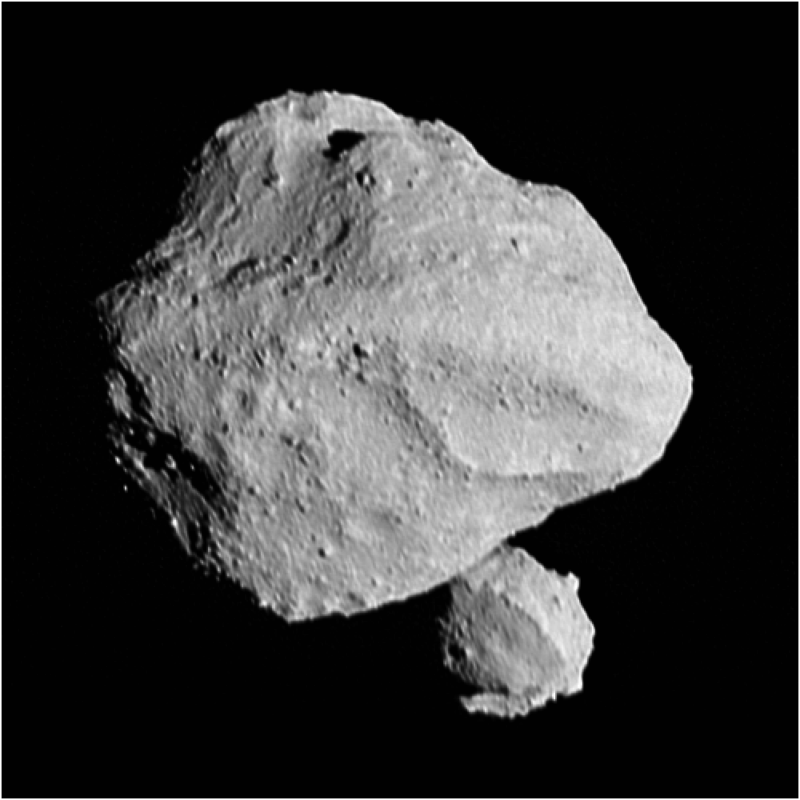
On November 1st, NASA’s Lucy spacecraft flew by the small asteroid Dinkinesh. The spacecraft’s initial images of this diminutive 0.4-mile-wide world have already illustrated the capabilities of its instrument suite. High-resolution images reveal that Dinkinesh’s surface is strewn with boulders and that it is orbited by a small moon. Dinkinesh’s companion, in turn, is a contact binary comprised of two asteroids which were fused together during a gentle collision. The encounter was a major milestone in its own right, as every asteroid which we explore with a spacecraft has the potential to teach us more about the ingredients which formed the planets. However, this initial flyby was just a foretaste of the data which the Lucy spacecraft will return over the coming decade. Including Dinkinesh, Lucy will investigate eleven different planetesimals over the course of its mission.
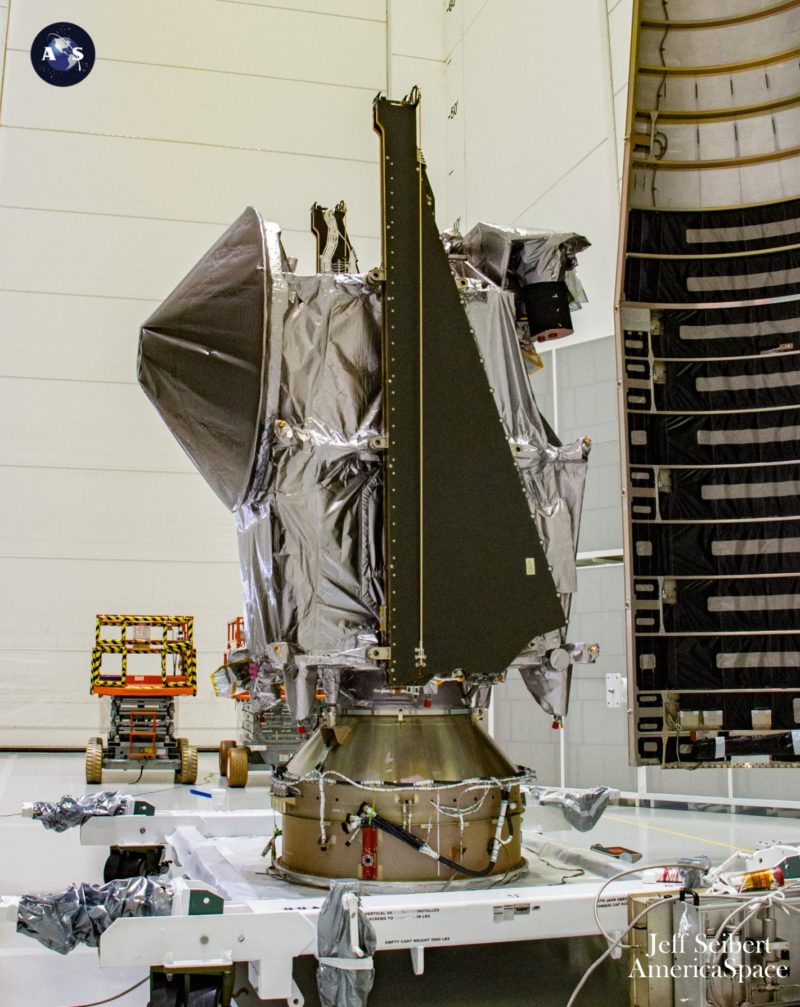
Lucy is the 13th mission in NASA’s Discovery Program. This program allows scientists to design and propose novel small planetary science missions to NASA. As far as interplanetary spacecraft are concerned, Discovery missions are inexpensive, with development budgets of $500 million or less. These frequent, affordable flight opportunities balance out larger Flagship missions and allow NASA to explore a variety of destinations simultaneously. Prior Discovery missions included the Mars Pathfinder lander, the Stardust comet sample return mission, and the Dawn mission to orbit the dwarf planet Ceres.
Lucy was pitched as the first mission to Jupiter’s Trojan asteroids. The Trojans are a family of small bodies which were gravitationally rearranged by Jupiter during the early history of the Solar System. They are trapped in clusters which orbit two of Jupiter’s Lagrange points. At these locations, the gravitational forces of Jupiter and the Sun are balanced; these forces can hold smaller objects in place indefinitely. Jupiter’s Trojans lead and trail the planet in its orbit by 60 degrees.
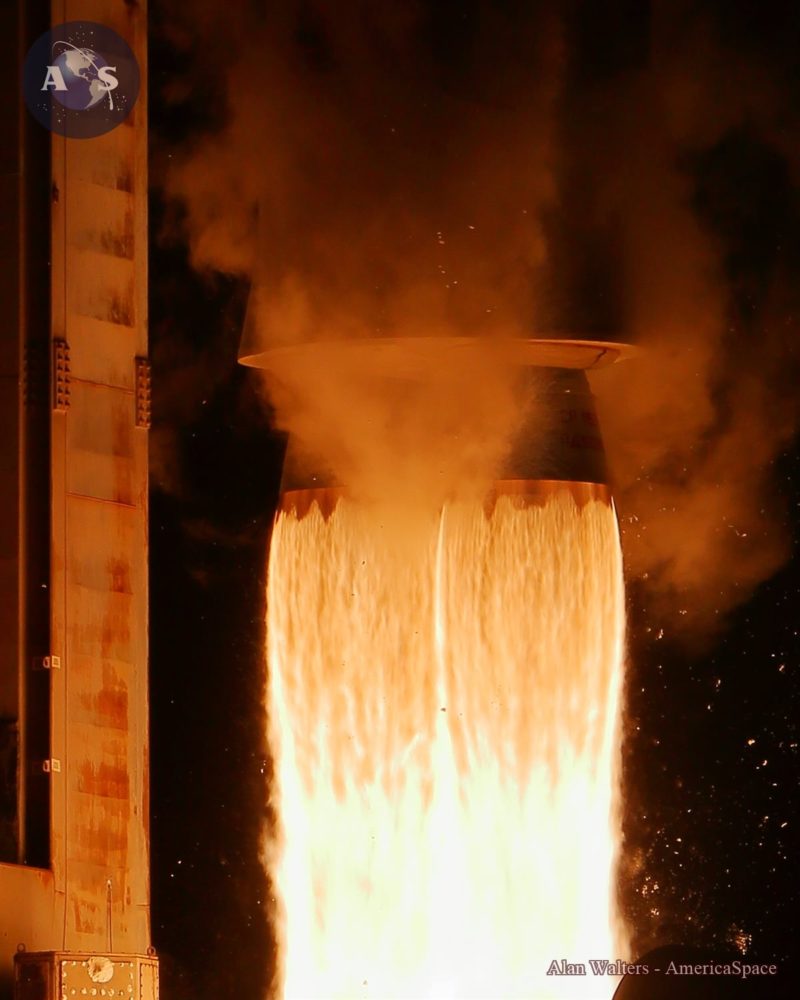
While planetary scientists have not determined the origin of the Trojan asteroids, the red tint of some of these objects suggests that they might have been captured from the Kuiper belt. This broad zone of debris is located beyond the orbit of Neptune, and Pluto is its largest and most famous member. If this theory is correct, the Trojans might be rich in water ice and organic compounds. Along with carbonaceous asteroids such as OSIRIS-REx’s target, Bennu, they might have played an essential role in delivering the ingredients for life to Earth. Over the course of its mission, Lucy will fly by eight Trojans and map their surfaces to test the hypothesis that they are captured Kuiper Belt Objects.
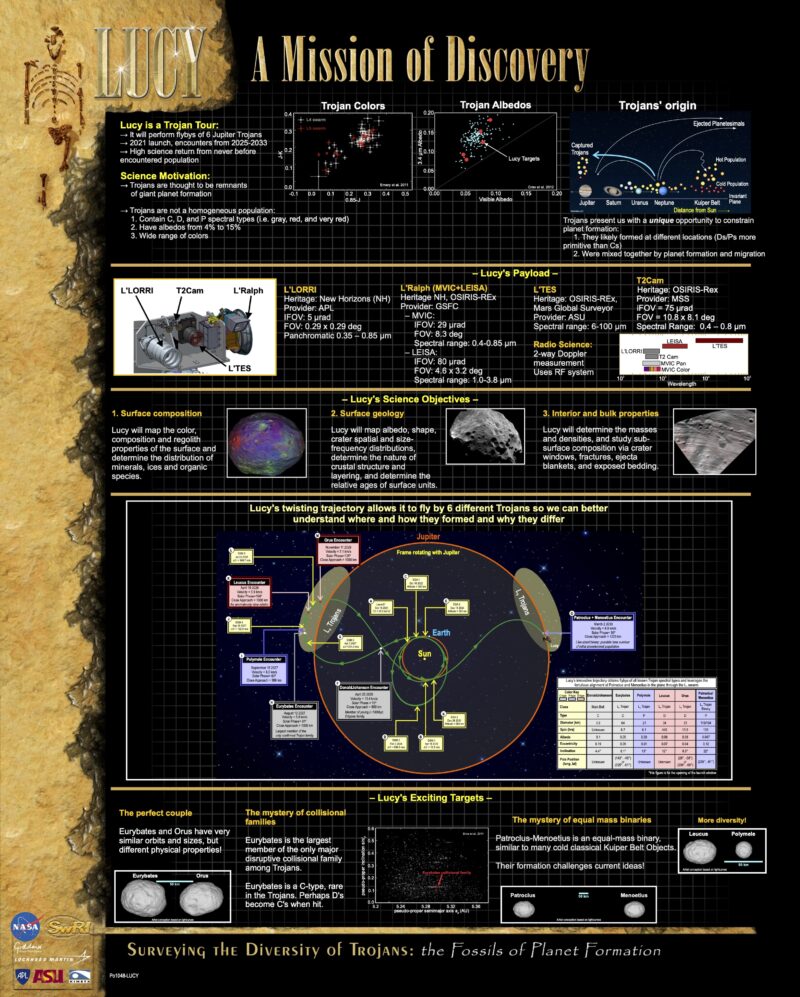
Dinkinesh was not originally on Lucy’s itinerary. However, the science team wanted to test the spacecraft’s instruments and software by observing a main belt asteroid before collecting vital data on the Trojans. In January of 2023, astronomer Raphael Marschall calculated that Lucy would pass just 40,000 miles from a small asteroid, then known as 1999 VD57. By conducting a small burn of the spacecraft’s thrusters, the team was able to tweak its trajectory to approach the asteroid at a reduced distance of 280 miles. They named their mission’s first target Dinkinesh, which is the Ethiopian name for the fossil of the early hominid Lucy. The mission’s namesake was one of the early ancestors of modern humans.
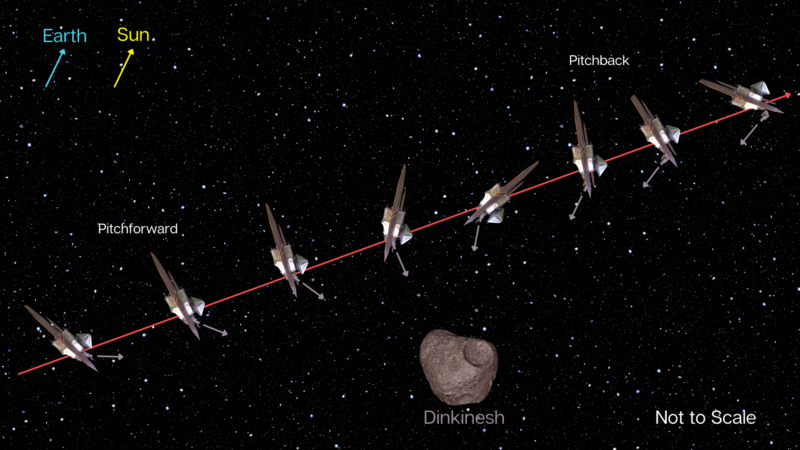
The primary goals of the flyby were to calibrate Lucy’s three instruments and to confirm that there are no errors in the software used to control them. The probe carries a telescopic camera (L’LORRI), a visible and near-infrared spectrometer (L’Ralph), and a thermal emission spectrometer (L’TES). Together, they allow planetary scientists to understand an asteroid’s composition, shape, and internal structure. The instruments are mounted on a scan platform, which will point them towards their target while the spacecraft remains stationary. The scan platform and its tracking cameras are some of the most innovative pieces of hardware on the spacecraft. The Dinkinesh flyby was intended to demonstrate that the scan platform can keep a small asteroid centered in the L’LORRI camera’s narrow field of view. Given that Lucy has already returned high-resolution photographs of the asteroid to Earth, it appears that this test was successful.
However, Lucy’s images of Dinkinesh are also valuable in their own right. The main belt of asteroids, located between Mars and Jupiter, is a debris field left over from the formation of the Solar System. As we learn more about this region, it is becoming apparent that this group of asteroids are not homogenous. Instead, they are an eclectic collection of stony, carbonaceous, icy, and metallic asteroids shepherded into their current orbits by the migration of the giant planets 3.9 billion years ago. Dinkinesh is the smallest main belt asteroid ever explored by a spacecraft. Therefore, Lucy’s flyby of this object will allow scientists to compare and contrast it to larger main belt asteroids explored by other spacecraft and investigate whether there is a link between the properties of an asteroid and its size.
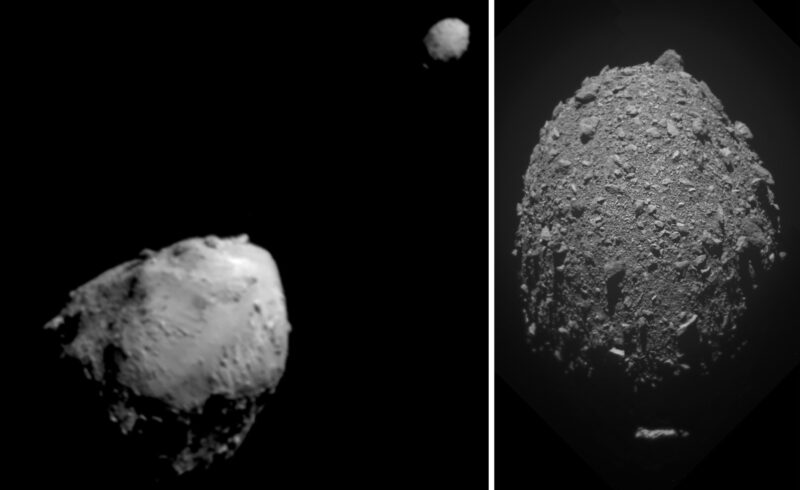
When the Lucy science team received the first high-resolution images from Lucy two days after the flyby, they were in for a surprise. Dinkinesh is not one asteroid, but three. The highest-resolution L’LORRI image revealed that the 0.4-mile-wide asteroid is accompanied by a moon which is half its size. The surfaces of both asteroids are strewn with boulders. This implies that they might be “rubble pile” asteroids, which are collections of smaller rocks held together by their collective weak gravitational field. However, this theory can only be tested by measuring the density of Dinkinesh.
Lucy project scientist Keith Noll noted that there are some similarities between the Dinkinesh system and the near-Earth asteroid Didymos, which was the target of the DART impactor. Dimorphos is orbited by a satellite named Dimorphos, and in both systems, the diameter of the main asteroid is roughly double that of its moon. DART’s final images also show that Dimorphos is clearly a rubble pile. However, Noll also pointed out that “there are some really interesting differences that we will be investigating.” [1]
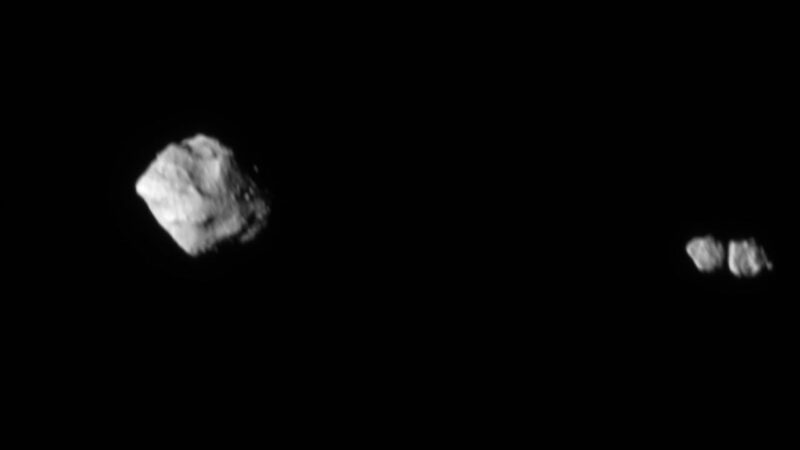
Lower-resolution L’LORRI images captured from a different angle enabled another unexpected discovery. Dinkinesh’s moon is comprised of two smaller asteroids which have been fused together. This peanut-shaped configuration is known as a contact binary, and it is relatively common among the small, icy bodies of the Kuiper Belt. The most famous example is Arrokoth, which was visited by the New Horizons spacecraft in 2019. Contact binaries form when two objects in nearby orbits are gradually drawn together by weak gravitational interactions. They eventually collide at a walking pace, which leaves both objects relatively intact.
Contact binaries are scientifically intriguing because they can only form when the parent bodies are in concentric, circular orbits. This was true of most Kuiper Belt Objects prior to the migration of the giant planets. However, Dinkinesh’s moon is the first contact binary which we have observed in the asteroid belt. This raises several new questions. Did the contact binary form early in the history of the Solar System, and was it subsequently captured into orbit around Dinkinesh? Or did the asteroid originally have two moons, which gently collided? Is this configuration common among small asteroids, or are contact binaries relatively scarce? Additional analysis of the data from Lucy will be required to differentiate between these hypotheses and any other theories which arise.
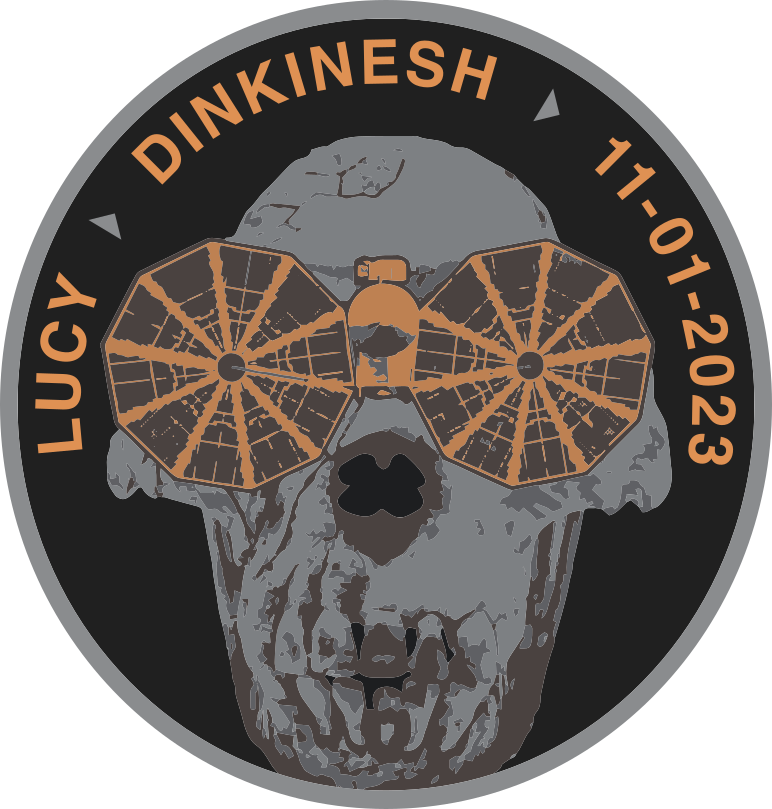
Over the coming days, spectra of Dinkinesh will also be returned to Earth. These data require more processing than the L’LORRI images, so the results of these observations might not be released for several months. However, scientists already have a hypothesis about the asteroid’s composition based on telescopic data. The leading theory is that Dinkinesh is a S-type stony asteroid. These asteroids are rich in silicate minerals, such as olivine and feldspar, and they were likely the primary building blocks of Earth’s mantle. Lucy’s flyby of the asteroid Dinkinesh was wildly successful. Preliminary images from the spacecraft’s L’LORRI telescope have already revealed that the asteroid is accompanied by a unique binary moon. Image processing will undoubtedly expose additional details about the surface and internal structure of the asteroid. Lucy’s next asteroid flyby is slated for April 20th, 2025. The spacecraft will explore a larger main belt asteroid named after Donald Johansen, the discoverer of the Lucy fossil.




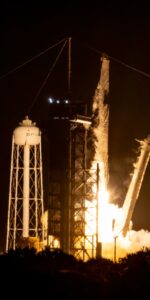
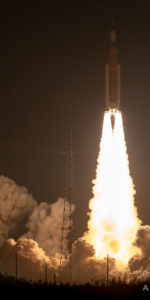
3 Comments
3 Pings & Trackbacks
Pingback:Crew Flight Test (CFT) Targets Monday Launch, Ambitious Starliner Mission Ahead - SPACERFIT
Pingback:ULA, NASA, Boeing Target Instantaneous Launch Tomorrow for CFT Starliner Mission - AmericaSpace
Pingback:ULA, NASA, Boeing Target Instantaneous Launch Tomorrow for CFT Starliner Mission - SPACERFIT